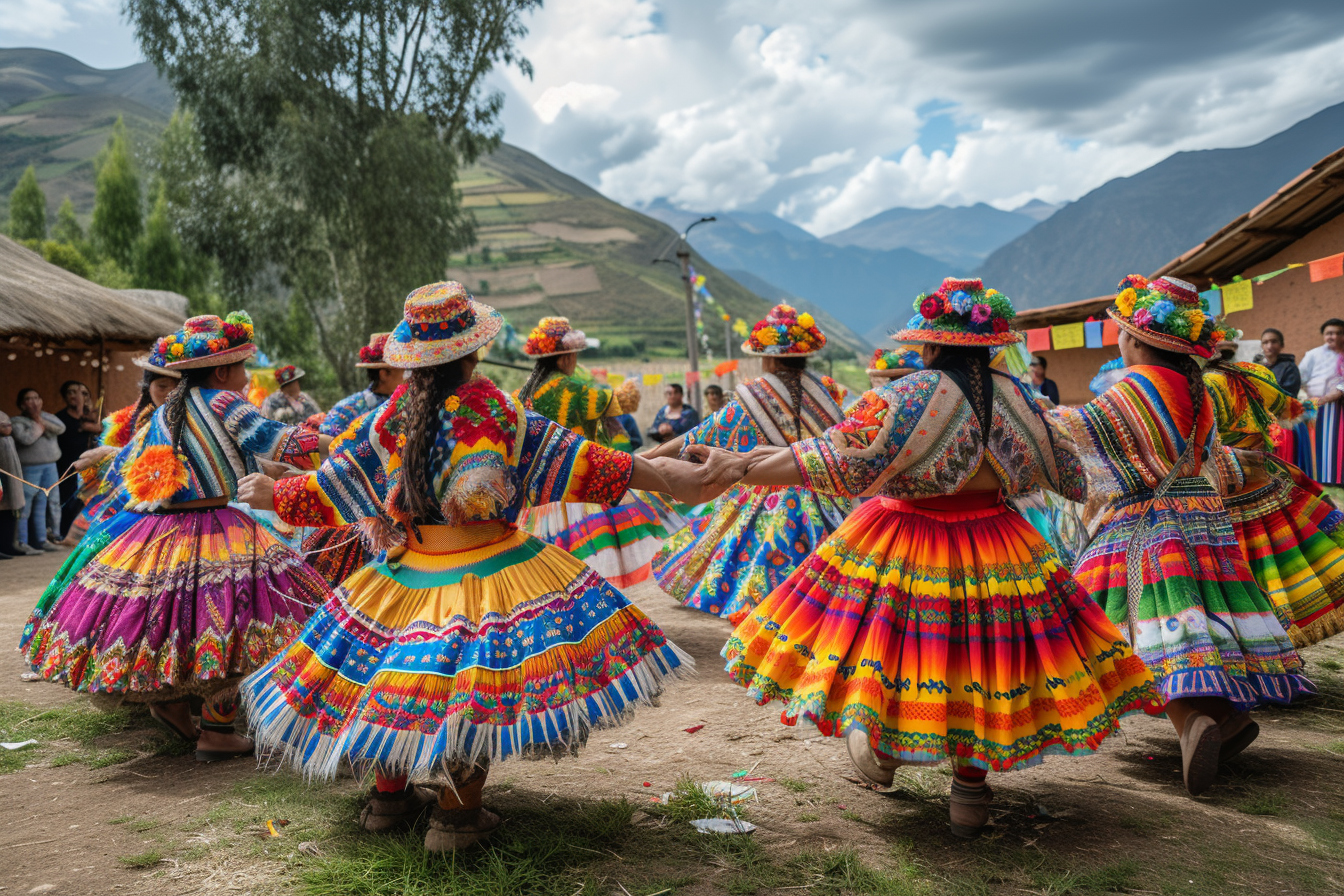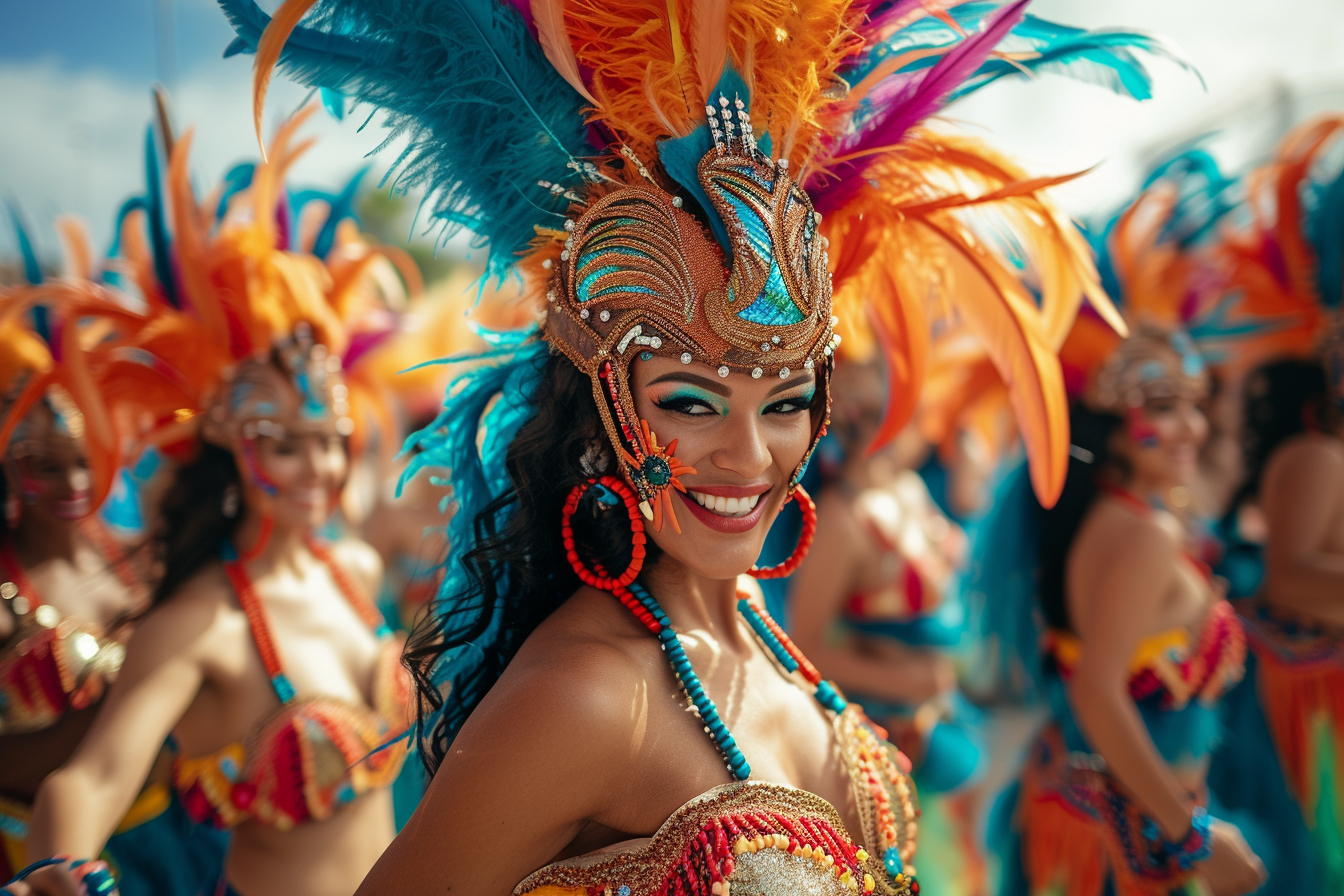Carnival bursts onto the world stage with a plethora of colors, sounds, and movements, a testament to the rich diversity and cultural depth that different societies express through this vibrant celebration. Sprung from various religious and cultural traditions, these festivities today serve as a unifying moment when communities come together in a display of creativity, resistance, and collective joy.
A historical glimpse
Rooted in antiquity, Carnival traditions can often be traced back to pre-Christian times, evolving throughout the ages to incorporate elements from various beliefs, rites, and social movements. They symbolize a period of release before the onset of a time of fasting or reflection, such as Lent in Christianity. Over time, they have become less about their religious connotations and more about community expression and celebration.
The brazil phenomenon
Rio de Janeiro’s Carnival has become almost synonymous with the word ‘Carnival’ itself. The Brazilian take on the festivity is a dazzling showcase of samba schools—organizations that are part community associations, part competitive parade groups. The preparation for these parades is meticulous, with schools selecting themes that often reflect social, political, or cultural narratives. Community members spend months crafting intricate costumes and floats, resulting in an exuberant musical and visual spectacle.
Venice’s masked affair
Ascending to elegance, the Venice Carnival is world-famous for its elaborate masks and costumes that harken back to the celebration’s Renaissance beginnings. Its signature masks promised anonymity and liberty in social interactions, allowing for a level of social fluidity that was otherwise unattainable in everyday Venetian life. The masks and costumes remain intricate works of art, and their creators uphold a tradition that has defied time and change.
Caribbean cultures at play
In the Caribbean, Carnival is deeply intertwined with the history of colonialism and the transatlantic slave trade. It was originally a festival exclusive to the European colonists, but enslaved Africans introduced their own rituals and beliefs into the fabric of the celebration as an act of resilience and defiance. Today, Caribbean Carnivals like Trinidad and Tobago’s are global benchmarks that mix African traditions, like calypso music and steelpan bands, with the pageantry inherited from European customs.
North america’s mardi gras
New Orleans’ Mardi Gras mirrors the city’s multicultural DNA, with influences from French, Spanish, African, and Native American traditions. ‘Krewes’—similar to Brazil’s samba schools—orchestrate the parades and balls, flaunting floats that tell stories or parody contemporary issues. King cake, jazz music, and the showering of beads and doubloons into the crowds, infuse traditional legacy with local zest.
Spiritual ties in the andean carnival

In contrast to the more widely known celebrations, the Carnival of Oruro in Bolivia stands out with profound spiritual and indigenous roots, recognized as a Masterpiece of the Oral and Intangible Heritage of Humanity by UNESCO. It blends Catholic rituals introduced by Spanish invaders with ancient Andean traditions, honoring both the Virgin of Candelaria and Pachamama, the earth deity. The prime spectacle is a long, processional dance-drama that narrates the story of good triumphing over evil.
Understanding cultural appreciation versus appropriation
While embracing the colorful exuberance of Carnival, it’s vital to recognize the thin line between cultural appreciation and cultural appropriation. Reveling in the joyous festivities is encouraged; however, one should be mindful of the historical and cultural significance of these customs and engage with them respectfully.
The social fabric of carnival
Inclusivity and camaraderie are hallmarks of Carnival culture; the festivities often serve as an equalizer in society, breaking down barriers of class, race, and social standing. This leveling of the social playing field, even if temporary, promotes solidarity and understanding across different segments of society. Moreover, Carnivals have a substantial economic impact, from tourism to local employment in costume and float construction.
Environmental considerations and the future of celebrations
As the world becomes increasingly aware of environmental issues, Carnivals too are examining their footprint. Sustainable practices are being integrated into production and execution, such as eco-friendly materials for costumes and floats or initiatives to manage waste during the events.
Revelry and resistance: a powerful duo
Beyond festivity, Carnivals can also be potent platforms for political expression. Many Carnivals have historically included an element of satire or social commentary, allowing oppressed groups a voice against those in power through the safety of masquerade and performance.
The role of technology in carnival evolution
With advances in technology, Carnival experiences are evolving. Live broadcasts and social media allow these local traditions to gain a global audience, broadening their impact and inviting worldwide participation. Virtual reality experiences and digital archives are also preserving these traditions for future generations.
Persistent thrills amid global challenges
Despite the challenges posed by global events such as pandemics, Carnivals strive to adapt and preserve their essence. Smaller, localized versions, or even virtual renditions, ensure that the spirit of Carnival remains undiminished, emphasizing the resilience and ingenuity of the human spirit in times of adversity.
Embarking on a tour of Carnival traditions across the globe offers an exhilarating and enlightening journey into the heart of different cultures. The rich tapestry of histories, stories, and celebrations not only fascinates but also bridges gaps between people. Engaging with Carnival traditions serves as a reminder that at the core of all cultural expressions is the universal pursuit of joy, unity, and the indomitable will to celebrate life in all its diversity. This exploration into the world’s Carnival traditions has revealed a complex convergence of art, history, and social commentary, wrapped in the spirit of celebration that continues to captivate and inspire.
